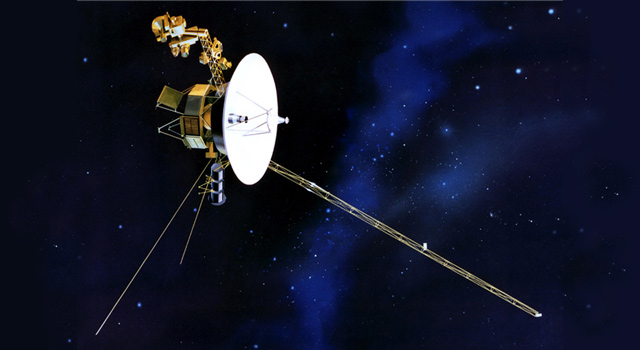
Geckos In Space
Last week, I told you about a Russian experiment involving live animals (geckos, to be precise) being sent into space aboard a Foton M4 for a two-month experiment. Then this happened:
As the article says, the experiment, designed to study the mating habits of the little lizards, was continuing as planned (probably), but ground control had lost the ability to command the spacecraft. Now it looks as though they’ve regained control and all is well, which means we’ll have two things to thank the Russians for after this: fascinating data on geckos in space, and headlines that use the phrase “lizard sex satellite.” So thanks for that, guys.

Interstellar
Has the Voyager 1 probe made it out of the heliosphere and into the interstellar medium? Yes or no. Since 2012 the number of stories that have been run claiming one way or the other have been legion, but with so little data to back it up and so little understanding of the edge of our solar system, it’s been a bit tricky to say. Now two scientists involved with the project have made a prediction that’s (mostly) testable. Professors George Gloeckler and Len Fisk, both of the University of Michigan, have suggested that, by their calculations, some time in 2015 the craft should pass through something called the “current sheet,” a point at which the sun’s magnetic field reverses polarity. This would be detectable by the craft, and would definitively tell us whether it has or hasn’t passed beyond the heliosphere. If we never detect it, in theory, we’re already there. Check out a great description of the science at phys.org, or check out the article itself over at Geophysical Review Letters.
And in other interstellar news, there’s a new trailer for Christopher Nolan’s film of the same name. Screenrant has the details.
Sixth Grade Science
This week started off with news about a sixth-grader’s science project going viral, but since then accusations of plagiarism from an old student of her father’s friend have left everyone feeling a little uncomfortable. whoever did the research first, it’s important to know that this invasive species has the ability to live in very low salinity water, making its progress up estuaries a danger to those freshwater ecosystems.
Fingerprinted
Earlier this week a little Big Brother paranoia spread about the internet with the revelation of a new kind of tracking called “canvas fingerprinting.” Headlines like “A newer kind of Web tracking is almost impossible to stop,” however, are a bit oversold. In a good article that explains the situation, pcworld puts our fears to bed:
“But of several emerging tracking methods, canvas fingerprinting isn’t the greatest: it’s not terribly accurate, and can be blocked.”
So not to worry, Netizens, your porn-watching habits can stay private with only a little extra work.
Space Dust at L2
The Gaia satellite, designed to map in detail a billion stars in the Milky Way, has made its first discovery: a preponderance of micro-meteoroids at the Lagrange point it’s stationed at. Because it has to stay so perfectly still to capture the faint images, it had sensors built in to measure its movement, and it’s these tiny nudges that scientists working on the project are discovering. Previous estimates had suggested they would get five to ten strikes a day on the probe, but it’s looking more like five hundred. Check out the article over at New Scientist for more.
DARPA Wants a Space Plane
In a move likely to amuse Elon Musk, the government agency reported last week that it had awarded three groups funding to pursue a contract for a space plane design. The demands are optimistic, to say the least:
For comparison, the Falcon 9 Reusable from SpaceX will when fully operational possibly get as low as five to seven million dollars, and take more than a day to refurbish , making the space plane specs not so much impossible as unlikely. We wish them luck.
The Rest of the Best
Among all the things floating about this week were some interesting finds: creationist (and amateur comedian) Ken Ham thinks aliens are going to hell so we shouldn’t be interested in finding them ; some promising new work has been done on deleting HIV from where it hides in human cells ; a new light bulb miniaturizes induction technology into the size and shape of an old incandescent ; sitting won’t kill you after all; and this tree grows 40 kinds of fruit.
That’s all for today. Have a great week.
